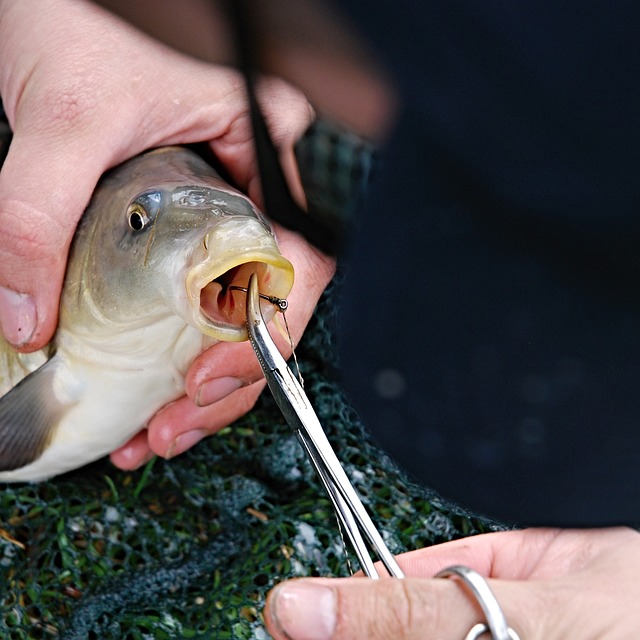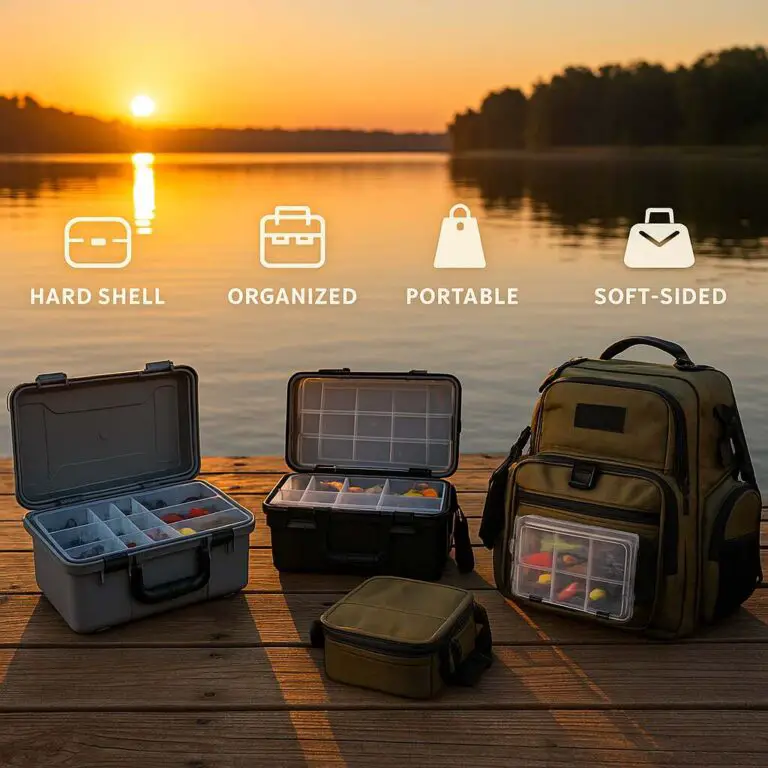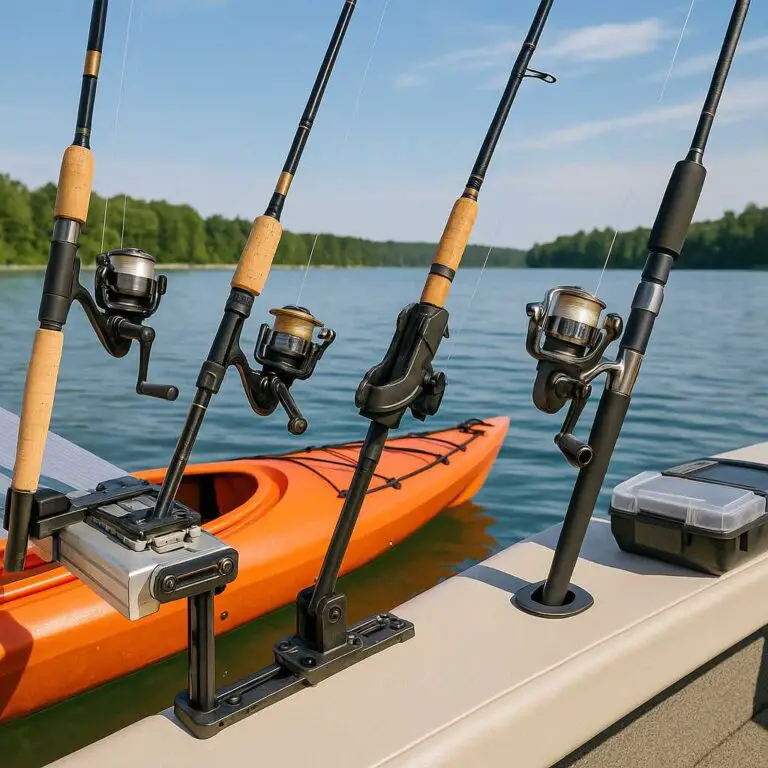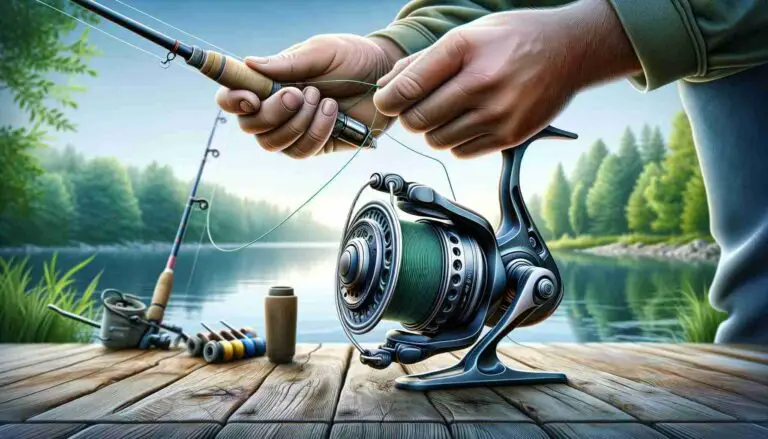If you’ve ever found yourself standing at the tackle shop, staring at a wall of hooks, wondering which one is the magic key to hooking your dream catch, you’re not alone. Choosing the right fishing hook size can be as crucial as selecting the right bait or finding that perfect fishing spot. So, what size fishing hook to use?
The ideal size of the fishing hook to use depends on the target species, bait, and fishing technique. For general fishing, a #6 to #1 hook size is versatile and can handle a variety of freshwater species like trout, bass, and panfish. Larger hooks, such as 2/0 to 5/0, are suitable for bigger game fish. Smaller hooks like #10 to #14 work well for delicate baits and panfish. Ultimately, it’s essential to match your hook size to the specific fishing situation to maximize your chances of success.
In this article, I’ll go deep into the world of hooks, answering all your questions, and helping you become a more successful angler. Let’s dive in!
What Size Hook for Trout?
When it comes to catching trout, selecting the right hook size is crucial for a successful day on the water. The ideal hook size can vary depending on the type of trout you’re targeting and the bait or lure you plan to use. Here’s a breakdown of hook sizes for different trout species:
-
Rainbow Trout
- Best Hook Size: #6 to #12
- Presentation: Rainbow trout are known for their varying appetites, so the hook size will depend on the size of the bait or lure you’re using. For smaller baits like worms or PowerBait, opt for smaller hooks in the #10 to #12 range. For larger presentations, such as spinners or spoons, consider hooks in the #6 to #8 range.
-
Brown Trout
- Best Hook Size: #6 to #12
- Presentation: Brown trout tend to be more selective, so it’s essential to match the hook size to the size of the bait. Similar to rainbow trout, smaller hooks work well with smaller baits, while larger hooks are suitable for bigger offerings.
Keep in mind that trout can be quite finicky, and experimentation may be necessary to determine the hook size that works best on any given day. Additionally, local regulations and conditions can also impact your hook choice, so be sure to check any fishing guidelines in your area before hitting the water.
What Size Hook for Bass?
Choosing the right hook size for bass fishing depends on the type of bass you’re targeting and the bait or lure you plan to use. Here are some general hook size recommendations for different bass species:
-
Largemouth Bass
- Best Hook Size: 3/0 to 5/0 for plastic worms.
- Presentation: Largemouth bass are often caught using techniques like Texas rigging or Carolina rigging with plastic worms. In these cases, larger hooks in the 3/0 to 5/0 range are suitable to accommodate the bulk of the plastic worm.
-
Smallmouth Bass
- Best Hook Size: #1 to 2/0 for finesse baits.
- Presentation: Smallmouth bass fishing often involves finesse techniques like drop shotting or using smaller soft plastics. Hooks in the #1 to 2/0 range work well for these presentations.
Keep in mind that these recommendations are not set in stone, and hook size can vary based on factors such as bait size, water conditions, and angler preference. Adjust your hook size as needed to match the specific conditions and the behavior of the bass in your fishing area.
What Size Hook for Catfish?
Selecting the appropriate hook size for catfish largely depends on the type of catfish species you’re targeting and the bait you intend to use. Here are some general hook size recommendations for catfishing:
-
Channel Catfish
- Best Hook Size: #2 to 2/0 for prepared baits.
- Presentation: When using stink baits, dough baits, or punch baits for channel catfish, opt for hooks in the #2 to 2/0 range. Circle hooks can also be effective for catfish, reducing the likelihood of gut-hooking.
-
Flathead Catfish
- Best Hook Size: 5/0 to 8/0 for live or large baits.
- Presentation: Flathead catfish are predators that prefer live baitfish or larger cut baits. To target these trophy fish, use larger hooks in the 5/0 to 8/0 range to match the size of your bait.
Remember that catfish can vary in size, so you should adjust your hook size based on the bait and the potential size of the catfish in the waters you’re fishing. Experimentation and local knowledge can also help you refine your hook size selection for catfish.
What Size Hook for Carp?
The choice of hook size for carp fishing depends on various factors, including the size of the carp you’re targeting, the bait you plan to use, and the fishing conditions. Here are some general hook size recommendations for carp fishing:
-
Common Carp
- Best Hook Size: #4 to 2/0.
- Presentation: For common carp, which can range in size, a versatile hook size range is #4 to 2/0. Adjust the hook size based on the size of your bait and the size of carp you expect to encounter.
-
Mirror Carp
- Best Hook Size: #4 to 2/0.
- Presentation: Similar to common carp, mirror carp can vary in size, so the hook size range of #4 to 2/0 works well. Match the hook size to the bait and the estimated carp size.
Remember that carp can be cautious feeders, so it’s essential to use an appropriate hook size that won’t alarm them. Additionally, consider the fishing regulations and conditions in your area, as some locations may have specific hook size restrictions. Experimentation and local knowledge can also help you determine the best hook size for carp in your specific fishing spot.
What Size Hook for Bluegill?
When targeting bluegill, choosing the right hook size is crucial for a successful day of fishing. Bluegill have relatively small mouths, so using an appropriately sized hook is essential to improve your hooking and landing rates. Here are some hook size recommendations for bluegill:
- Best Hook Size: #8 to #12.
- Presentation: Bluegill are panfish with small mouths, so it’s best to use smaller hooks in the #8 to #12 range. These hooks are ideal for presenting live bait such as worms, crickets, or small pieces of nightcrawlers or mealworms, which are popular bluegill baits. Using hooks within this size range will help you avoid spooking the fish and ensure a better hook-up rate when they strike.
Remember that bluegill are often found in schools, and they can be voracious feeders, making them an excellent target for anglers of all skill levels. So, use these smaller hooks, and you’ll be well on your way to landing plenty of bluegill on your next fishing trip.
What Size Hook for Crappie?
Selecting the right hook size for crappie is essential to maximize your chances of success when fishing for these popular panfish. Crappie have relatively small mouths, so using appropriately sized hooks is crucial for a successful catch. Here are some hook size recommendations for crappie:
- Best Hook Size: #4 to #6.
- Presentation: Crappie are known for their preference for smaller baits, so hooks in the #4 to #6 size range work well for most crappie fishing situations. These hooks are suitable for presenting live minnows, crappie jigs, or soft plastics effectively. When using live bait, make sure the hook size matches the size of the baitfish you’re using.
Keep in mind that crappie can be found in various sizes and in different bodies of water, so it’s a good practice to carry a variety of hook sizes within this range to adapt to changing conditions and the preferences of the crappie in your chosen fishing spot.
What Size Hook for Other Species?
Selecting the right hook size for various fish species can greatly impact your fishing success. Here are hook size recommendations for some additional popular fish species:
-
Walleye
- Best Hook Size: #2 to 2/0.
- Presentation: Choose hook size based on the size of your baitfish, leeches, or soft plastics. Smaller hooks work well for smaller baits, while larger hooks are suitable for larger offerings.
-
Salmon
- Best Hook Size: #1 to 4/0.
- Presentation: Hook size can vary depending on the species of salmon and the fishing method. Larger hooks are generally used for king salmon, while coho and pink salmon may require smaller hooks.
-
Striped Bass
- Best Hook Size: 4/0 to 8/0.
- Presentation: Striped bass can grow quite large, so use bigger hooks, especially when fishing in saltwater or targeting larger individuals.
-
Pike
- Best Hook Size: 1/0 to 4/0.
- Presentation: Pike have large mouths and can handle substantial baits. Choose hooks that match the size of your baitfish or lures.
-
Panfish (e.g., Sunfish, Bream, Perch)
- Best Hook Size: #8 to #12.
- Presentation: Smaller hooks in the #8 to #12 range are ideal for these smaller species. Use them with live bait like worms, insects, or small pieces of natural bait.
-
Redfish:
- Best Hook Size: 3/0 to 5/0.
- Presentation: Redfish can grow large and have powerful jaws. Use larger hooks when using live or cut bait to target these strong fighters.
Always consider the size of your bait, the target species, and local fishing conditions when choosing your hook size. Adjustments may be necessary based on the specific circumstances of your fishing trip.
What Size Hook for Different Techniques?
The ideal hook size for different fishing techniques can vary depending on the method and the specific bait or lure you’re using. Here are hook size recommendations for various fishing techniques:
- Wacky Rig
- Best Hook Size: #1 to 3/0 depending on worm size.
- Presentation: When using the wacky rig technique, select a hook size that matches the diameter of your wacky-rigged worm. Smaller hooks are suitable for thinner worms, while larger hooks work for thicker worms.
- Texas Rig:
- Best Hook Size: 3/0 to 5/0 for plastic worms.
- Presentation: Texas rigs often involve using plastic worms or creature baits. Choose a hook size that fits the size and weight of your bait.
- Drop Shot
- Best Hook Size: #1 to 2/0.
- Presentation: Smaller hooks in the #1 to 2/0 range are suitable for finesse drop shot baits, such as soft plastics or small live baits.
- Spinnerbaits:
- Best Hook Size: 1/0 to 4/0.
- Presentation: Spinnerbaits come in various sizes and styles. Choose a hook size that complements the spinnerbait‘s size and the type of fish you’re targeting.
- Jigging
- Best Hook Size: Varies by jig head size.
- Presentation: Match the hook size to the size of your jig head. Smaller hooks for smaller jigs and larger hooks for larger jigs.
- Crankbaits
- Best Hook Size: Varies by the size of the crankbait.
- Presentation: Crankbaits come in different sizes, so ensure that the hook size aligns with the lure’s design and size.
- Topwater Lures
- Best Hook Size: Varies by the type and size of the topwater lure.
- Presentation: Pay attention to the lure manufacturer’s recommendations for hook size, as they often design lures with specific hooks in mind.
Remember that these are general guidelines, and you may need to adjust your hook size based on the particular fishing conditions and the preferences of the fish you’re targeting. Always be ready to experiment and adapt to achieve the best results for your chosen fishing technique.
Conclusion
In conclusion, selecting the right hook size is a crucial aspect of successful fishing. It directly impacts your ability to hook and land your target species effectively. Here are some key points to keep in mind:
- Fish Species: Different fish species have different mouth sizes and feeding habits, so the ideal hook size varies. Always consider the specific species you’re targeting.
- Bait or Lure: The size of your bait or lure should guide your hook selection. A well-matched hook ensures a natural presentation and increases your chances of enticing a strike.
- Fishing Technique: Your chosen fishing technique, whether it’s finesse techniques like drop shotting or more aggressive methods like crankbait fishing, will influence your hook size.
- Local Conditions: Local fishing regulations and conditions may impose hook size restrictions, so be sure to check these before heading out.
Ultimately, adaptability is key. Be prepared to adjust your hook size based on the factors mentioned above, as well as any unique conditions in your fishing spot. Don’t be afraid to experiment, seek local advice, and refine your approach to find the perfect hook size for your next fishing adventure.
So, grab your gear, choose the right hook, and may your next cast be the one that hooks the fish of a lifetime. Happy fishing!
Here’s another great article you should read next: Best Day To Go Fishing








